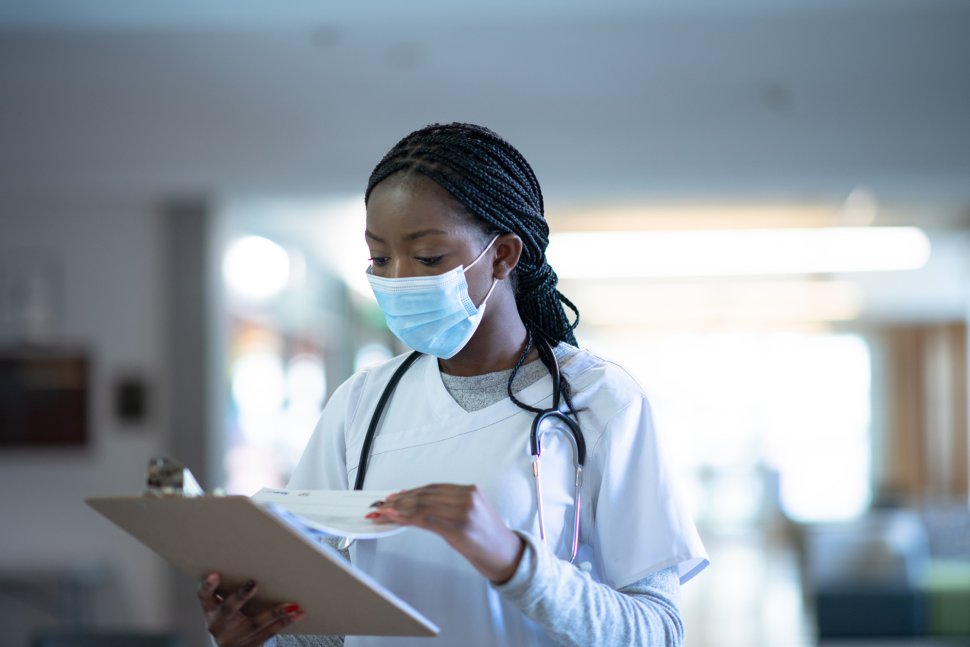Students around the world are attempting to continue their studies amidst a pandemic, but medical students, in particular, have been hit hard. Unable to access the opportunities to volunteer, research, and shadow professionals, many are struggling to prepare for their future professions. With COVID, the Association of American Medical Colleges (AAMC) issued guidance “strongly suggesting medical students not be involved in direct patient care activities.” By pausing clinical rotations, hospitals conserve scarce resources (like masks and other protective equipment) while simultaneously minimizing exposure to the students, workers, and the general public.
Though these guidelines help prevent the spread of the virus, students are missing critical experience opportunities. One study by BMC Medical Education surveyed students’ perceptions of the pandemic’s impact on their education and found that 93.7% of students were not involved in clinical rotations–meaning they were not interacting with patients in person. In a normal scenario, these med students would be working alongside the front line workers, shadowing and observing doctors while beginning to specialize in their respective fields.
Typically, medical school lasts for four years. In the first two years, students take classes in basic sciences and labs while learning how to examine a patient. Years three and four are for clinical experience: students do rotations at hospitals to assist in a particular field. It’s crucial so these aspiring doctors can consider future career paths. Afterwards, students spend three to seven years in residency before finally becoming a doctor.
Nowadays, educators have built an online curriculum. Some parts are easy to achieve, like the traditional classes and discussions that have transitioned onto Zoom. Hands-on procedures, however, are difficult to replace, forcing people to use newer technologies. Instead of direct cadaver dissection, students can learn anatomy with special software that maps bodies on 3D planes.
But even if learning has shifted to a virtual format, there is a gap between diagnosing someone via an interactive program versus in real life. Clinical clerkship is fundamental to learn from practitioners and become more confident–that’s something that online courses can’t just simply substitute. Plus, teaching sessions can be disrupted by a bad wifi connection or a broken computer. Trying to learn online without in-person experience can be compared to, in the words of Nick Scalzo, a New York Medical College student, “playing baseball without a bat.”
It’s also harder to stand out: students have to worry about building their application for residency. A huge factor of those applications is their volunteer and research experience, but both are extremely limited at the moment. Mentally, people are worrying about being “good enough” for residency. And with limited connection with classmates, the sympathy and relationships a student would normally have for support may not be there.
Med students are at increased risk of mental and psychological disorders. But since they are not considered part of the healthcare workforce, they don’t have the COVID mental health support that is available to professionals. According to Frontiers, med students have a “significantly higher prevalence of depression, depressive symptoms, and suicidal ideations relative to the general population”. With guidelines for social distancing, many are feeling socially isolated. For students with pre-existing mental health issues, the pandemic has only exacerbated the issue, as social factors are likely to “worsen their vulnerabilities” and persist long-term. Other studies show med students are at an increased risk of developing eating disorders due to academic and emotional stressors, and those with eating disorders may be vulnerable to COVID and anxiety.
On a different note, the pandemic has spurred talk of restructuring the teaching and examination process. Medical knowledge is dynamic and physicians dedicate their lives learning. Through COVID, the entire medical field came together to solve challenges with key concepts in biology, sociology, psychology, and others. Technology-based learning allows students to learn according to their own schedules and in the comfort of their own home or preferred location. There’s more flexibility, letting some better manage their workloads. But as a trade-off, most studying is done independently, even though professors try to have office hours and encourage collaboration. It’s just that hard to connect with peers.







